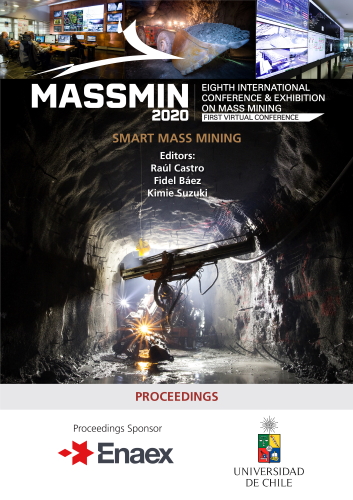Mine access development simulation through direct mine design data integration

|
Authors: Jenkinson, H |
This paper is hosted with the kind permission of Lulea University of Technology, International Conference & Exhibition on Mass Mining, 2024.
DOI https://doi.org/10.36487/ACG_repo/2063_58
Cite As:
Jenkinson, H 2020, 'Mine access development simulation through direct mine design data integration', in R Castro, F Báez & K Suzuki (eds), MassMin 2020: Proceedings of the Eighth International Conference & Exhibition on Mass Mining, University of Chile, Santiago, pp. 829-840, https://doi.org/10.36487/ACG_repo/2063_58
Abstract:
Mine development and tunnelling require significant investment. Optimised resource planning and scheduling of underground mine development can prove to be extremely valuable by ensuring your development project is completed on time and within budget. This paper will showcase innovative work where mine design data were directly integrated with specialised mine development simulation software to rapidly develop a detailed, on-scale model of an underground Long Hole Open Stope mine’s access development tunnels. The direct integration of the mine design as well as various rock and face attributes enabled accurate model configuration, testing of various development mining operations and powerful scenario analysis. This approach decreased model setup time and limited data transfer - and setup related errors. The simulation model was utilised to evaluate a variety of technology trade-offs being considered. These technology considerations involved: (1) Manual versus automated (2) Cutting versus drilling (3) Various blasting operations. In the design there are four access tunnels from the portals into the mining operation for ventilation and logistical purposes. The mine design and attributes are imported into the simulation software to create a “dynamic mine design”. The model parameters that are configured can in turn be applied to the actual design, including development cycles used to develop the various tunnels, equipment parameters and times for each face size (e.g. drilling times, LHD capacity, speeds, etc.), tipping destinations, shift schedules and equipment maintenance. Various development scenarios were designed to determine which mining- and technology options would be most effective to access the Long Hole Open Stope orebody earlier during the life of the operation, in order to improve the Net Present Value of the project. Evaluating the model outputs and scenario experimentation were used to determine the following: (1) The achievable development rates based on the development activity cycles (e.g. drilling, blasting, cleaning and supporting cycles of the conventional, and civil tunnelling methodologies) (2) Equipment capabilities and fleet requirements to achieve and sustain the required development rates (3) Gross and net development cycle times (4) Utilisations and productivity of mining development equipment (5) Maximum possible capital access meters based on planned trackless forecast (6) Impact of various mining technology options as well as Tunnel Boring Machines (TBM) trade-offs. The capability to integrate mine design layouts directly into simulation software enabled the client to evaluate conventional access options and various rapid development technologies to best access the orebody in the shortest timeframe and at the lowest possible cost. Therefore, the approach followed, improved the NPV of the client’s project by providing a plan for accessing the orebody earlier in the life of the operation.
© Copyright 2025, Australian Centre for Geomechanics (ACG), The University of Western Australia. All rights reserved.
View copyright/legal information
Please direct any queries or error reports to repository-acg@uwa.edu.au
View copyright/legal information
Please direct any queries or error reports to repository-acg@uwa.edu.au
